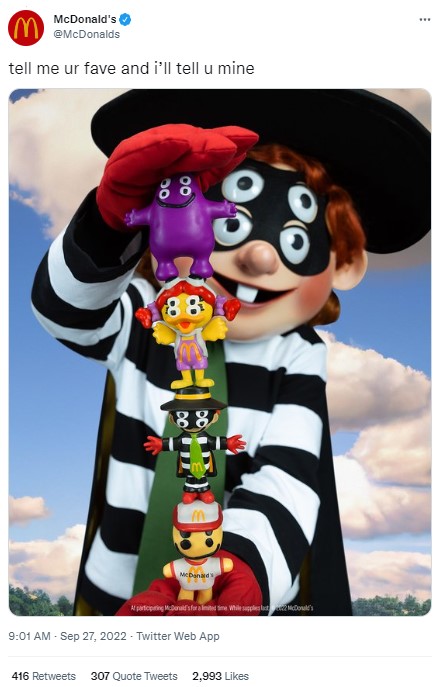2 Min Read
Happy Meal Backlash
“One day you ordered a Happy Meal for the last time and you didn’t even know it.”
That line hits on the sentiment McDonald’s is after with its new adult Happy Meal campaign.
The adult Happy Meals serve up either a Big Mac or a 10-piece Chicken Nuggets, plus fries, a drink and a limited edition toy from fashion streetwear brand Cactus Plant Flea Market.
The fast food giant is banking on the nostalgia many grown ups feel about the combo meals. It’s working – the Happy Meal campaign is a hit with customers, prompting engagement on social media and something of a collecting spree for the toys.
McDonald’s employees, on the other hand, aren’t exactly loving it.
Amid the positive PR coverage of the campaign, another narrative emerged as publications like Fortune began spotlighting McDonald’s employee complaints about navigating long lines, toy shortages and frustrated customers. Many articles include posts from employees begging people not to order the meals – messaging that’s not exactly aligned with the goals of the campaign.
Too Many Served
In a lot of ways, McDonald’s is a victim of its own success here. The Happy Meals were extremely popular, driving outlets to look for other angles to cover and follow-up news hooks. Stressed employees navigating surging demands fit the bill.
But the backlash underscores an important point. In building out this campaign, McDonald’s didn’t adequately develop messaging for a key audience – employees. Judging from the posts, some team members didn’t feel heard or supported in serving all those extra Happy Meals, so they took to social media.

Employees today have more channels than ever for connecting and commiserating – and little of it is taking place on company-sanctioned intranets and email threads.
It’s also a lesson in planning for best-case scenarios. The campaign’s popularity created stressful conditions for employees and a call for more coverage. Better preparing for those shortages could have made employees’ jobs a little easier, and prepping follow-up story angles could have kept press coverage in the positive column.